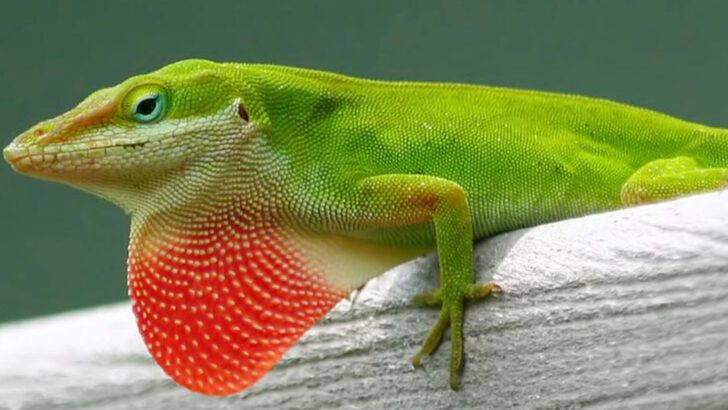North Carolina is a wildlife wonderland, where every corner of the state offers a new discovery. From the sun-kissed shores to the misty mountains, this southeastern gem is home to creatures of all shapes and sizes, each thriving in their own unique environment.
Whether you’re spotting a black bear wandering the forests or marveling at a rare bird perched in the trees, the diversity of animals in North Carolina is truly remarkable. The state’s varied landscapes provide a perfect backdrop for everything from coastal critters to mountain-dwelling species, making it an adventure for any nature lover.
These animals aren’t just living—they’re thriving, showcasing the raw beauty and complexity of the natural world. Ready to meet the creatures that make North Carolina a wildlife paradise? Let’s explore 26 amazing animals that call this state home and learn how they’ve adapted to the diverse habitats around them.
Eastern Box Turtle
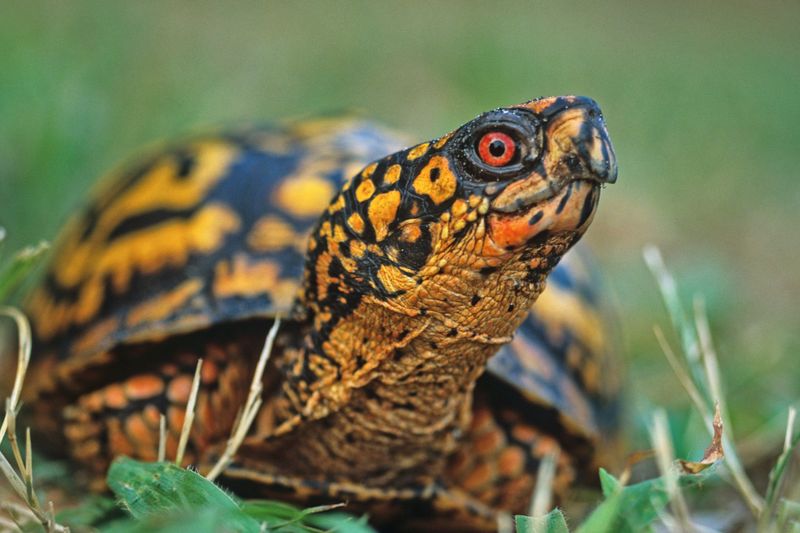
The Eastern Box Turtle, a terrestrial species native to North Carolina, is easily recognized by its domed shell. These turtles thrive in the state’s diverse woodlands and forests.
With vibrant orange and yellow patterns, they blend seamlessly with the autumn foliage. Box turtles are known for their long lifespan, living up to 50 years or more.
These turtles are primarily omnivorous, feasting on insects, berries, and fungi. They are most active during the day, especially after rain. Box turtles play an essential role in the ecosystem by dispersing seeds and controlling insect populations.
Carolina Chickadee
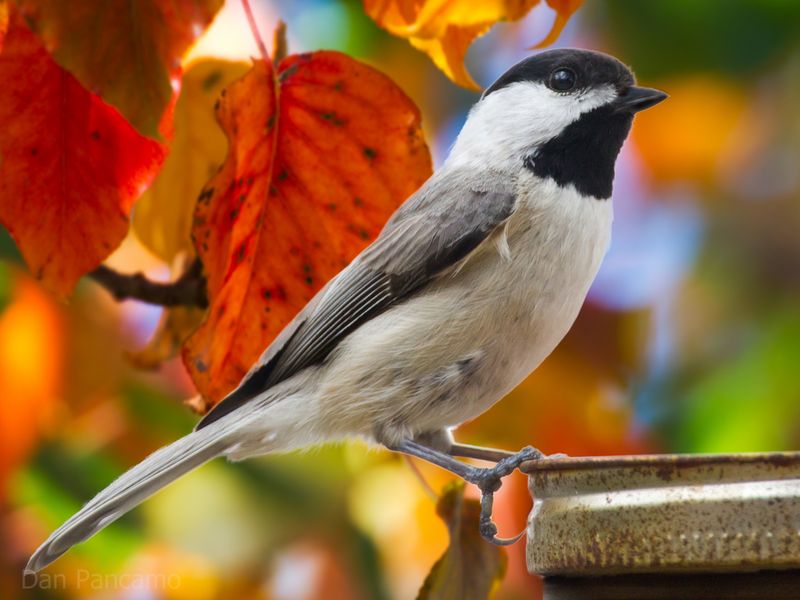
The Carolina Chickadee, with its distinctive black cap and bib, is a small yet energetic bird that inhabits North Carolina’s forests and suburban areas. Its cheerful ‘chick-a-dee-dee-dee’ call is a familiar sound in these regions.
Adaptable and resourceful, the chickadee forages for insects and seeds, often hanging upside down on branches. In winter, they form flocks with other small birds to improve survival rates.
These social birds contribute to pest control and help distribute plant seeds, making them invaluable to their ecosystem.
American Black Bear
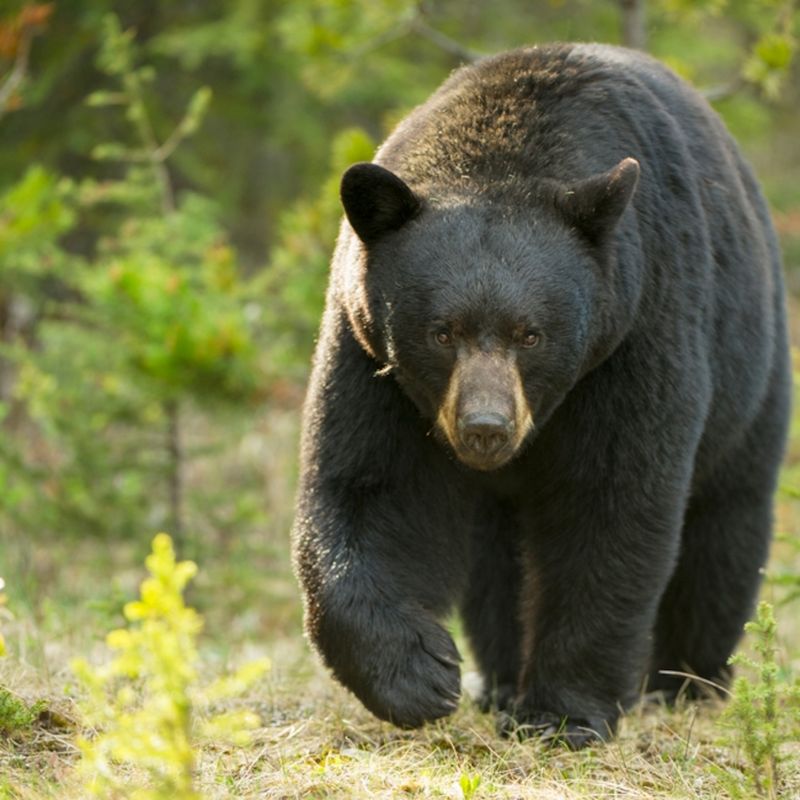
The American Black Bear is a prominent resident of North Carolina’s mountainous areas. These bears are versatile mammals, adapting to various habitats, including forests, swamps, and coastal regions. Known for their intelligence and curiosity, they often forage for food across large territories.
Black bears are omnivores, consuming a diet of fruits, nuts, insects, and small mammals. They play a crucial role in their ecosystem by controlling prey populations and dispersing plant seeds.
Observing black bears in their natural habitat is a testament to North Carolina’s rich biodiversity.
Great Blue Heron
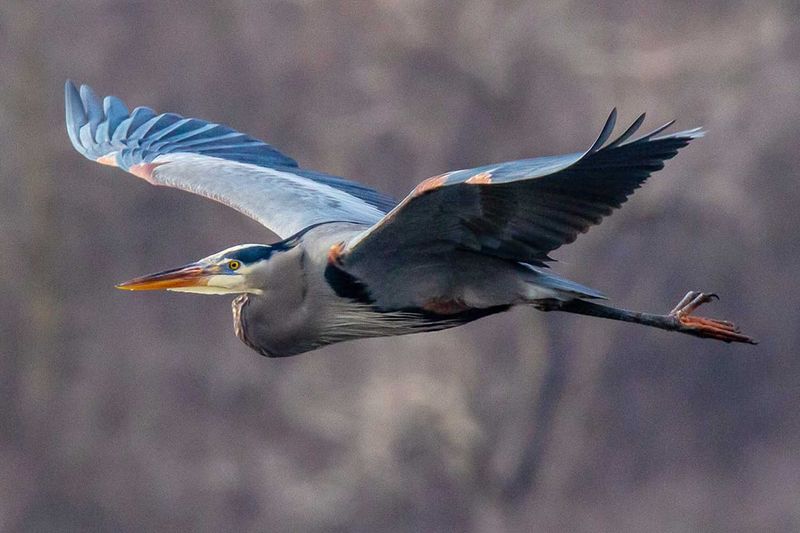
The Great Blue Heron is a majestic bird commonly found in North Carolina’s wetland areas. With its long legs and striking blue-gray plumage, it is a familiar sight along the state’s rivers and coastal regions.
These birds are expert fishers, often seen standing still in water, waiting to catch their prey with lightning-fast strikes.
Herons also feed on amphibians and small mammals. They nest in colonies known as heronries, contributing to North Carolina’s vibrant birdlife. The presence of Great Blue Herons indicates healthy ecosystems, vital for maintaining biodiversity.
Eastern Bluebird
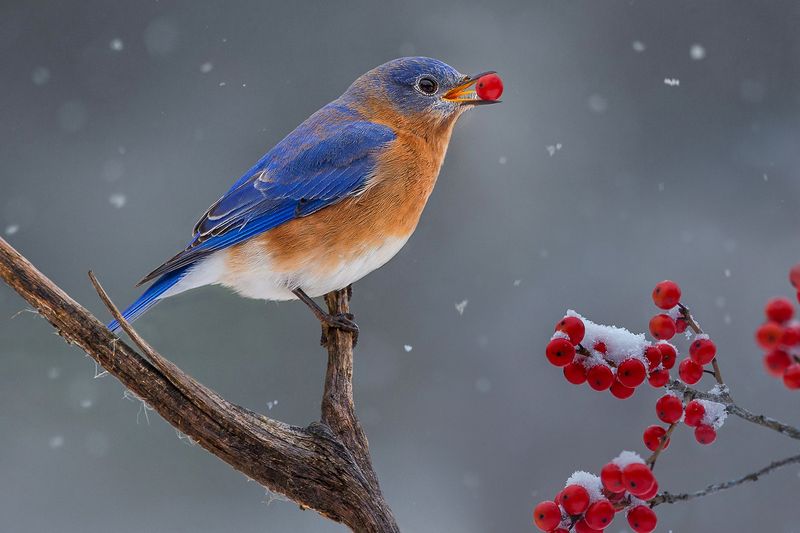
The Eastern Bluebird is a symbol of happiness and is cherished in North Carolina for its brilliant blue plumage and sweet song.
These birds prefer open fields and gardens, where they feed on insects and berries. Eastern Bluebirds are cavity-nesters, often using old woodpecker holes or birdhouses provided by humans.
During the breeding season, these birds are particularly active, showcasing courtship displays and feeding their young. Eastern Bluebirds help control insect populations, making them beneficial for agriculture and natural pest management.
Their presence adds joy to North Carolina’s landscapes.
Red Fox
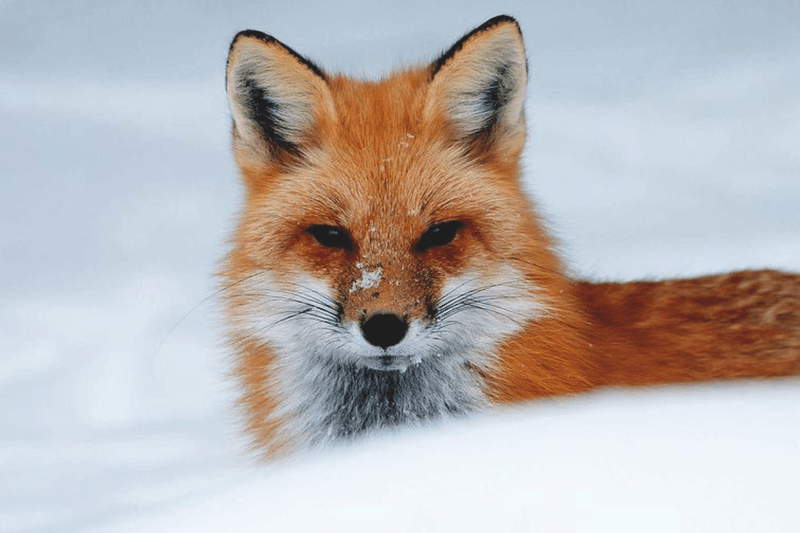
The Red Fox is a cunning and adaptable mammal found throughout North Carolina. Known for its bright orange-red coat and bushy tail, the red fox thrives in various habitats, including forests, grasslands, and suburban areas.
It is a solitary hunter, employing stealth and agility to capture prey such as rodents and birds.
Red foxes are also scavengers, contributing to their adaptability in changing environments. They play a significant role in controlling small mammal populations, helping maintain ecological balance.
Observing a red fox in the wild is a captivating experience, reflective of North Carolina’s diverse wildlife.
Pileated Woodpecker
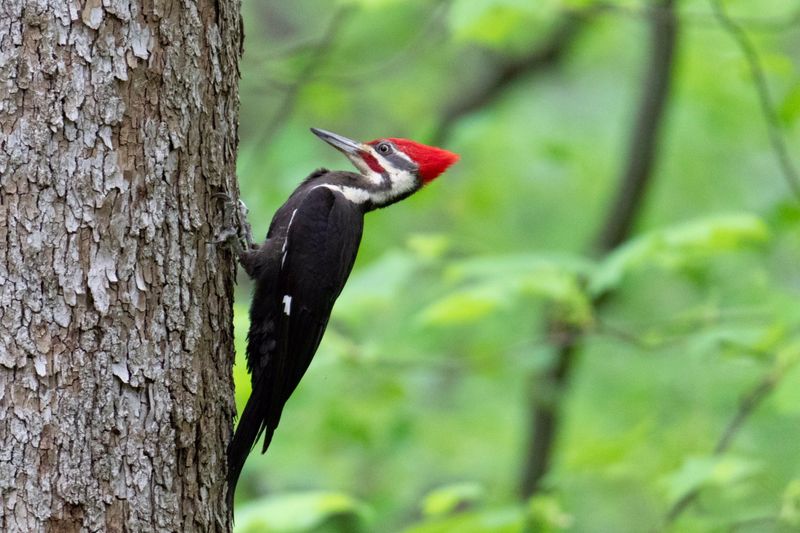
The Pileated Woodpecker, with its striking red crest and black-and-white plumage, is a large and charismatic bird found in North Carolina’s mature forests.
Known for its powerful drumming, the woodpecker excavates deep cavities in search of insects, particularly carpenter ants and beetle larvae.
These birds also create nesting sites in dead trees, providing homes for other species. The pileated woodpecker’s presence indicates healthy forest ecosystems, as it requires large tracts of woodland to thrive. Its distinctive call and drumming are iconic sounds in North Carolina’s natural soundscape.
River Otter
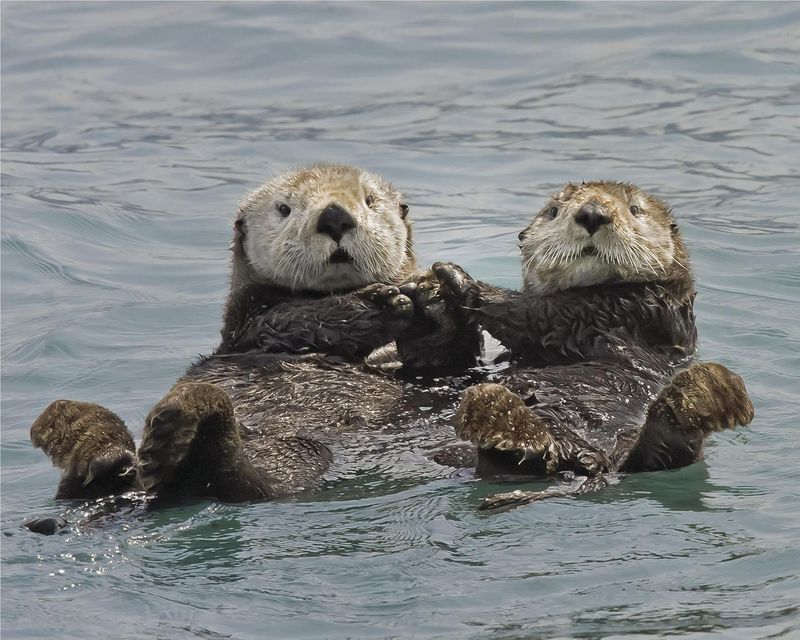
The River Otter is a playful and agile mammal that inhabits North Carolina’s freshwater rivers and streams. With its sleek body and webbed feet, it is perfectly adapted for an aquatic lifestyle. These otters are social creatures, often seen playing and sliding along riverbanks.
River otters feed primarily on fish, but their diet also includes crustaceans and amphibians. They are key indicators of healthy aquatic ecosystems, as they require clean water to thrive.
Observing river otters in the wild is a joyous experience, showcasing the lively nature of North Carolina’s wildlife.
Timber Rattlesnake
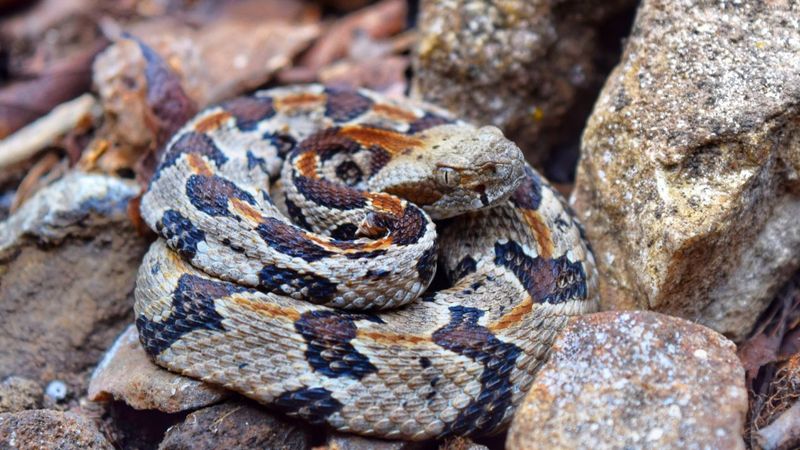
The Timber Rattlesnake is a venomous but generally reclusive snake found in North Carolina’s rugged terrain. Known for its distinctive rattles and camouflaged scales, this snake is a master of disguise, blending into its surroundings to ambush prey.
Timber rattlesnakes prey on small mammals, playing a crucial role in controlling rodent populations. Despite their fearsome reputation, they are not aggressive and prefer to avoid humans.
Their presence indicates a healthy, balanced ecosystem. Respect and caution are advised when encountering these fascinating reptiles in North Carolina’s wild.
Northern Cardinal
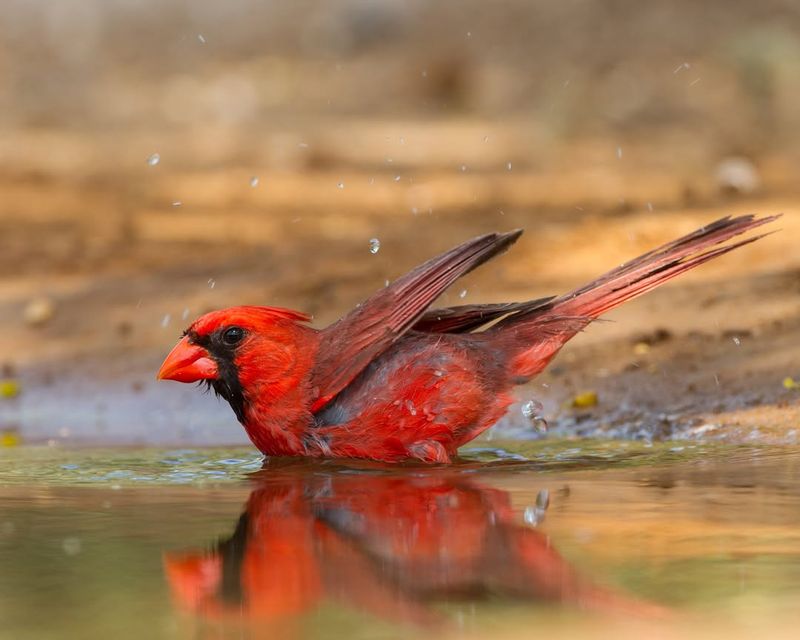
The Northern Cardinal, with its vibrant red plumage and striking crest, is a beloved symbol of North Carolina. These birds are commonly found in woodlands, gardens, and backyards, where they feed on seeds and insects. Their melodic song is a delightful feature of the state’s soundscape.
Northern Cardinals are monogamous, often seen in pairs throughout the year. They play an essential role in dispersing seeds, contributing to plant diversity.
The cardinal’s brilliant color and enchanting presence make it a cherished addition to North Carolina’s wildlife.
Gray Tree Frog
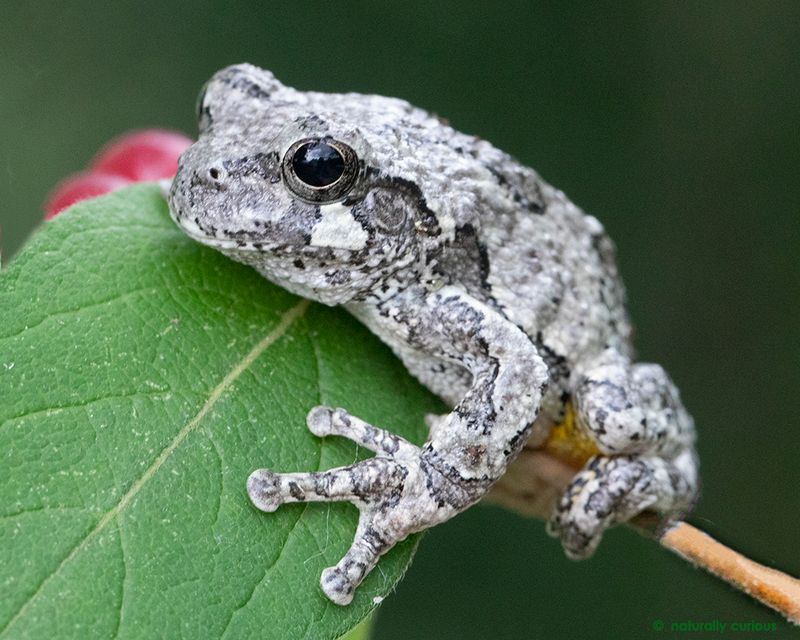
The Gray Tree Frog is a small, nocturnal amphibian found in North Carolina’s forests and swamps. Known for its remarkable camouflaging ability, it can change its skin color from gray to green to blend with its environment.
These frogs are excellent climbers, using sticky toe pads to navigate trees and shrubs. Their trilling calls fill the night air during breeding season.
Gray Tree Frogs are insectivorous, helping control pest populations. Their presence is an indicator of healthy ecosystems, as they are sensitive to environmental changes. Encountering these frogs highlights North Carolina’s rich amphibian diversity.
White-Tailed Deer
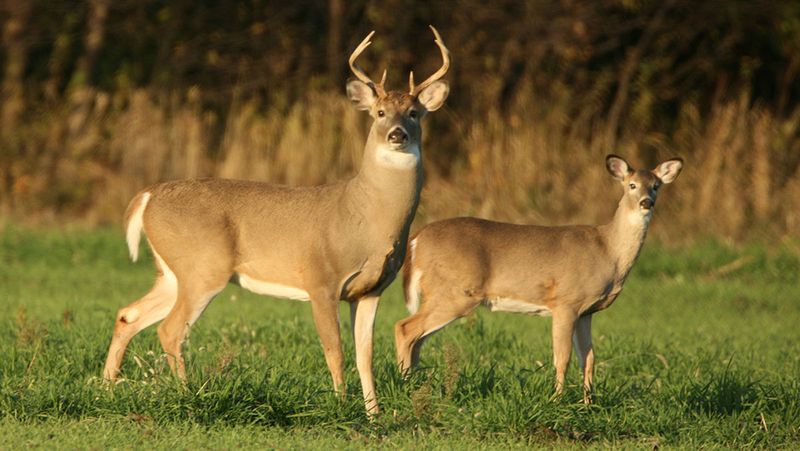
The White-Tailed Deer is one of North Carolina’s most iconic mammals, known for its grace and agility. These deer thrive in the state’s forests, fields, and suburban areas. Recognizable by their white underside of the tail, they raise it as a warning signal when alarmed.
White-tailed deer are herbivores, feeding on a variety of vegetation, including leaves, twigs, and fruits. They play a role in shaping plant communities, though overpopulation can lead to vegetation damage.
Observing a white-tailed deer in its natural habitat offers a glimpse into the serene beauty of North Carolina’s landscapes.
Bald Eagle
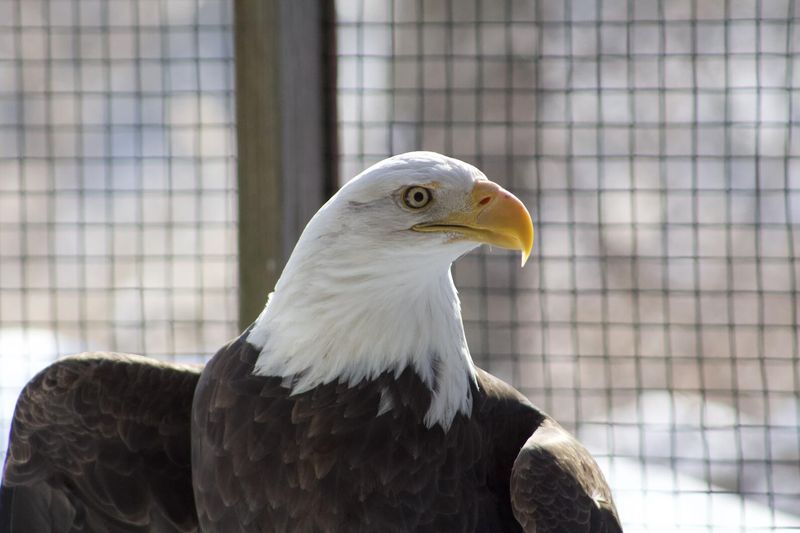
The Bald Eagle, a symbol of strength and freedom, is a magnificent bird of prey found in North Carolina. With its distinctive white head and tail, it is easily recognizable as it soars over lakes and rivers in search of fish.
Bald Eagles are skilled hunters, but they also scavenge and steal from other birds. They build large nests high in trees, returning annually to raise their young.
The presence of Bald Eagles is a testament to successful conservation efforts and the health of North Carolina’s ecosystems.
Southern Flying Squirrel
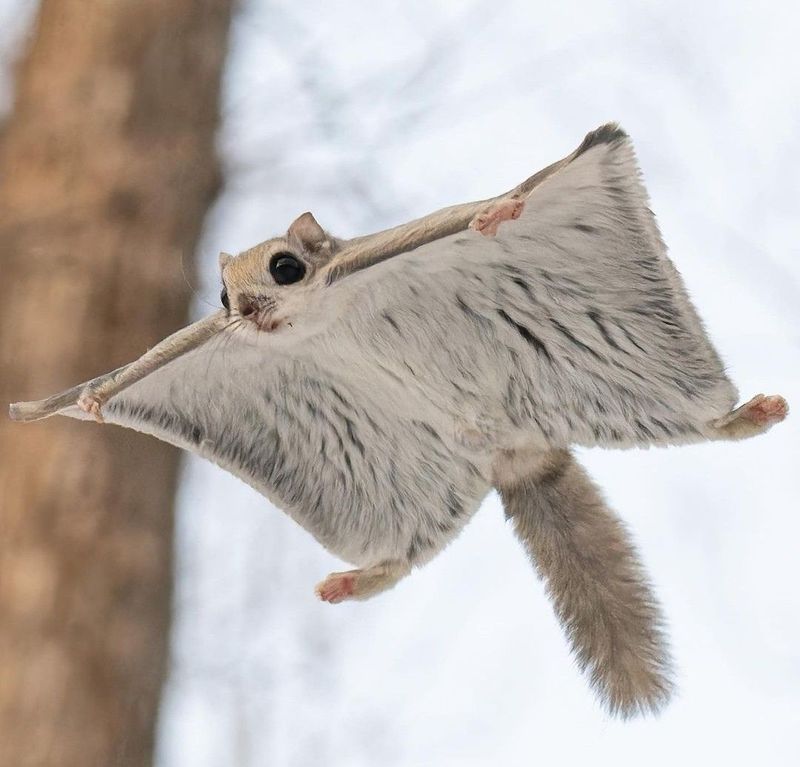
The Southern Flying Squirrel is a nocturnal glider native to North Carolina’s forests. Despite its name, it doesn’t truly fly but uses a patagium—a membrane stretching from wrist to ankle—to glide between trees.
Known for their large eyes and bushy tails, these squirrels are adept at navigating the night.
They feed on nuts, seeds, and fungi, playing a role in forest regeneration by spreading seeds. Observing these endearing creatures requires patience, as they are most active at night. Their presence adds an element of mystery and wonder to North Carolina’s woodlands.
Bobcat
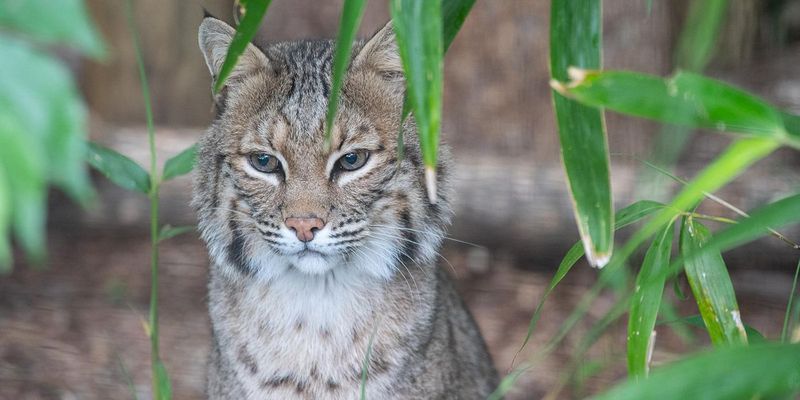
The Bobcat, with its tufted ears and short, bobbed tail, is a skilled predator inhabiting North Carolina’s forests and swamps. Known for its elusive nature, the bobcat is primarily nocturnal, hunting small mammals and birds with great stealth.
Bobcats are solitary animals, marking large territories to avoid other individuals. They play a vital role in controlling prey populations, contributing to ecological balance.
Spotting a bobcat in the wild is a rare and exciting experience, reflecting the untamed beauty of North Carolina’s wilderness.
Coyote
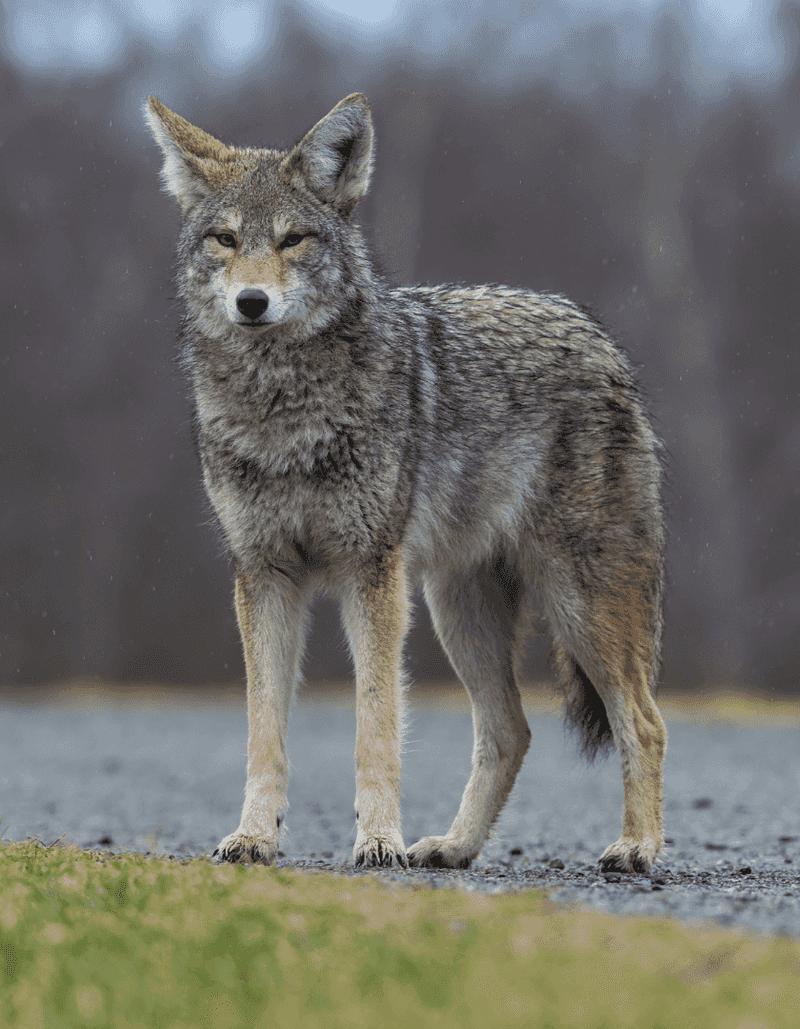
The Coyote is a highly adaptable canid found throughout North Carolina, from rural farmlands to urban areas. Known for its tawny fur and keen eyes, it is often heard howling at dusk and dawn.
Coyotes are opportunistic feeders, consuming a varied diet, including small mammals, fruits, and carrion. Their ability to thrive in diverse environments highlights their resilience.
Coyotes play a critical role in controlling rodent populations, benefiting ecosystems. Understanding and coexisting with these intelligent animals can help foster a healthy balance in North Carolina’s landscapes.
Marbled Salamander
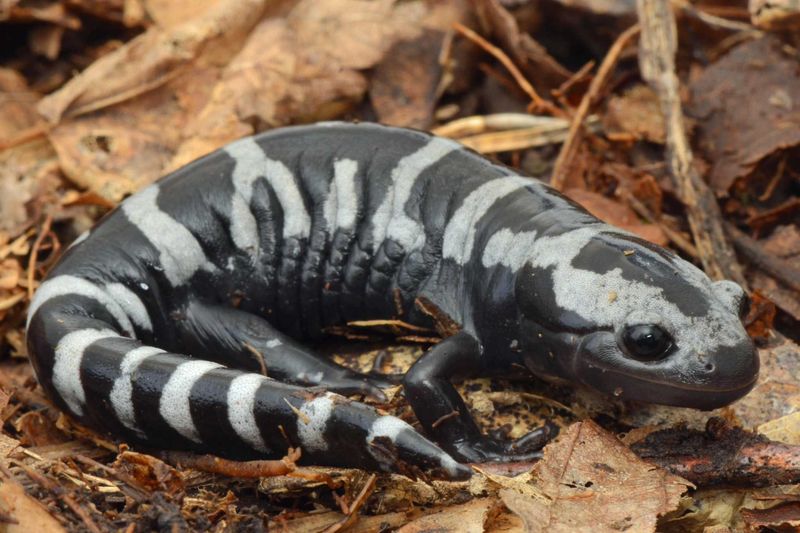
The Marbled Salamander is a striking amphibian found in North Carolina’s moist woodlands and floodplains. Recognizable by its black body with white or gray marbled patterns, it leads a secretive, nocturnal lifestyle.
These salamanders breed in temporary pools, where their larvae develop. As predators of insects and small invertebrates, they help control pest populations.
Marbled salamanders are indicators of environmental health, sensitive to habitat changes and pollution. Their presence signifies a well-balanced ecosystem, contributing to North Carolina’s rich biodiversity.
Eastern Screech Owl
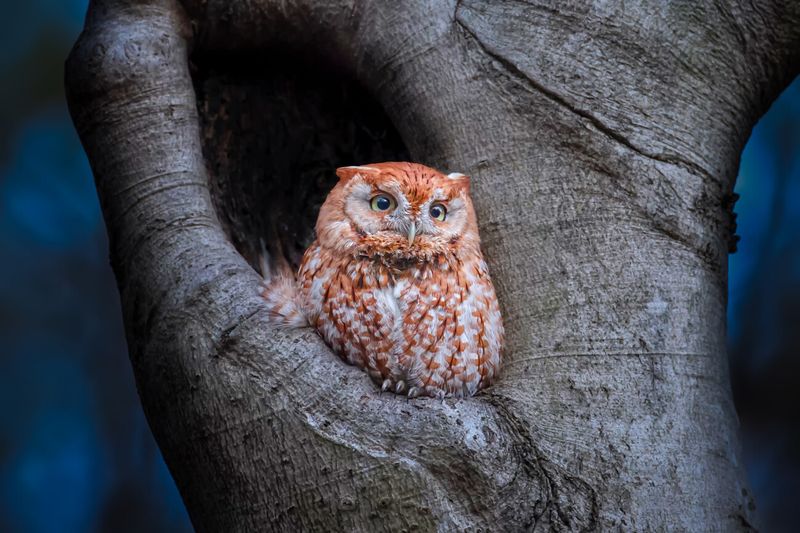
The Eastern Screech Owl is a small, nocturnal bird of prey found in North Carolina’s forests and suburban areas. Known for its ear tufts and camouflage plumage, it blends into tree bark while roosting during the day.
These owls are versatile hunters, preying on insects, rodents, and small birds. Their trilling or whinnying calls echo through the night, adding to the state’s natural chorus.
Eastern Screech Owls are cavity-nesters, often using old woodpecker holes or nest boxes. They play a significant role in controlling pest populations, enhancing the ecological balance.
Eastern Painted Turtle
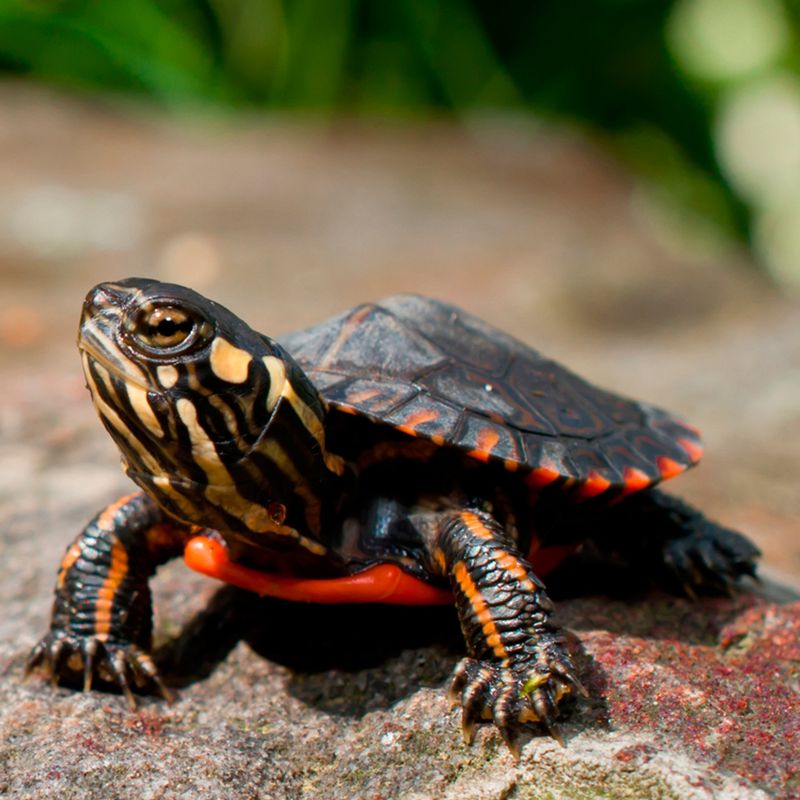
The Eastern Painted Turtle is a common aquatic reptile found in North Carolina’s ponds and slow-moving waters. Known for its smooth, colorful shell and bright yellow stripes, it is often seen basking on logs or rocks.
These turtles are omnivorous, feeding on aquatic vegetation, insects, and fish. They play a role in maintaining the health of aquatic ecosystems by controlling algae and insect populations.
Painted turtles are a delightful sight for nature enthusiasts, representing the vibrant aquatic life in North Carolina’s wetlands.
Blue Jay
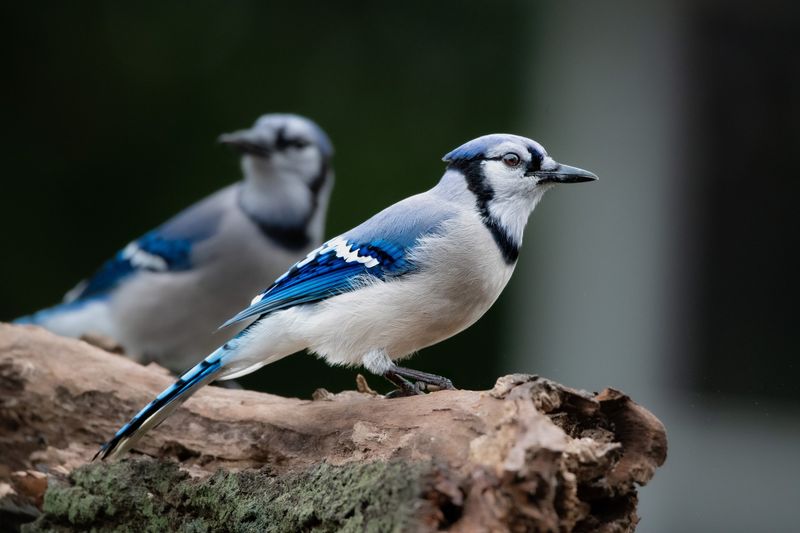
The Blue Jay, with its striking blue and white plumage and bold personality, is a familiar bird in North Carolina’s forests and suburban areas. Known for its intelligence and complex vocalizations, it can mimic the calls of other bird species.
Blue Jays are omnivorous, feeding on seeds, nuts, insects, and occasionally small vertebrates. They are known to cache food for later consumption, showcasing their resourcefulness.
These birds play a role in seed dispersal, contributing to forest growth. Their vibrant presence and vocal antics make them a delightful addition to North Carolina’s avifauna.
American Alligator
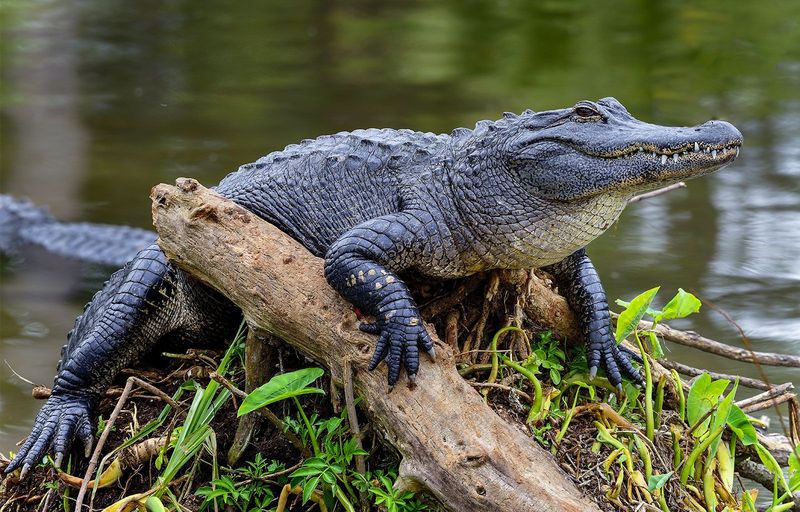
The American Alligator is a formidable reptile inhabiting North Carolina’s coastal wetlands and rivers. Known for its powerful body and sharp teeth, it is a top predator in its ecosystem.
Alligators are primarily carnivorous, feeding on fish, birds, and mammals. They play a crucial role in shaping wetland environments by controlling prey populations and creating nesting habitats for other species.
Observing an alligator in the wild is a thrilling experience, highlighting the primal beauty of North Carolina’s natural landscapes.
Gray Fox
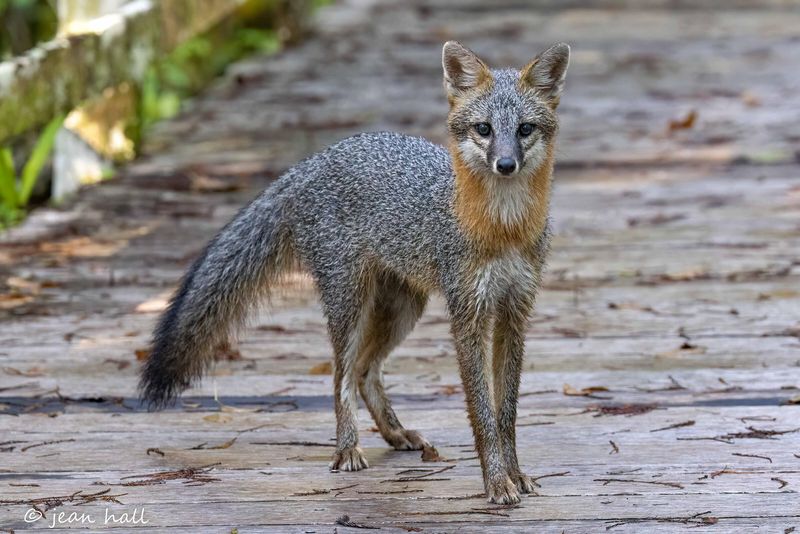
The Gray Fox is a unique canid native to North Carolina, known for its ability to climb trees. With grizzled gray fur and a black-tipped tail, it is well-adapted to forested environments.
Gray foxes are omnivorous, consuming fruits, insects, and small animals. Their climbing ability allows them to escape predators and access a diverse range of food sources.
As nocturnal creatures, they are more elusive than their red counterparts. The gray fox’s adaptability and secretive nature contribute to the fascinating diversity of North Carolina’s wildlife.
Eastern Cottontail Rabbit
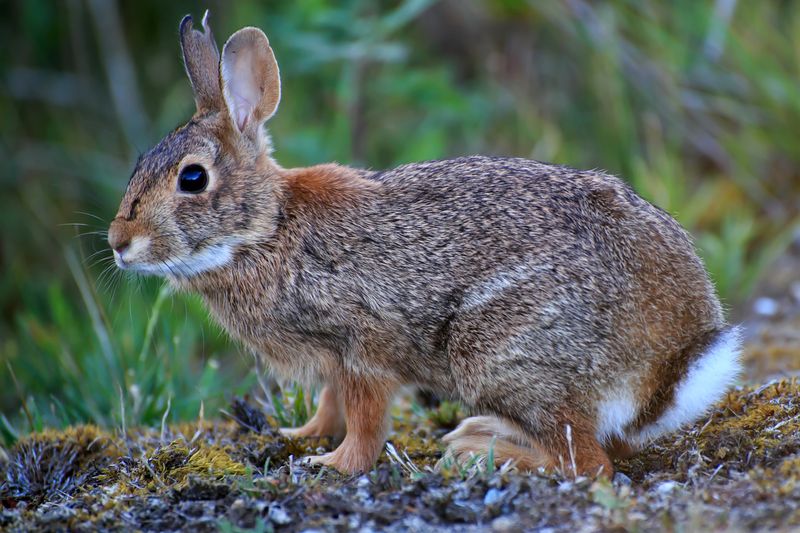
The Eastern Cottontail Rabbit is a common sight in North Carolina’s meadows, fields, and suburban gardens. Recognizable by its fluffy white tail, it is a symbol of agility and alertness.
These rabbits are herbivorous, feeding on grasses, clover, and garden crops. They have a high reproductive rate, which helps sustain predator populations.
Eastern cottontails are wary animals, using their keen senses to detect danger. Their presence in various habitats highlights the adaptability and resilience of wildlife in North Carolina.
Wild Turkey
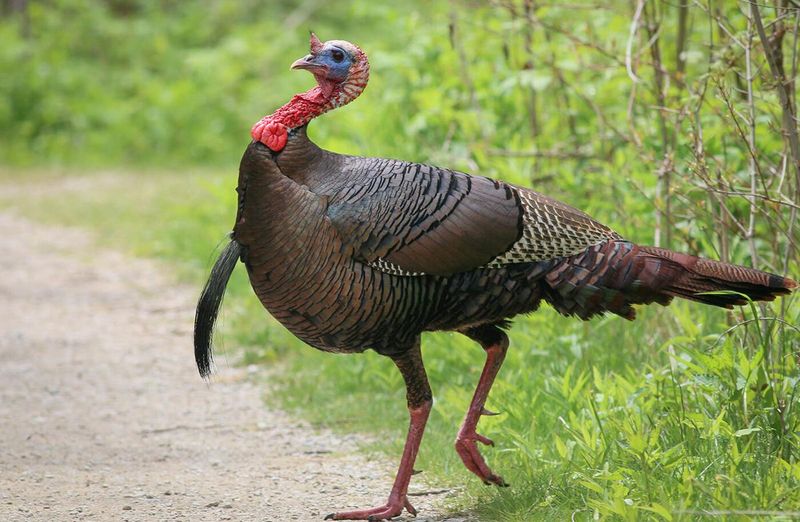
The Wild Turkey is a large, ground-dwelling bird found in North Carolina’s woodlands and open fields. Known for its iridescent plumage and fan-shaped tail, it is an iconic species.
Turkeys forage on the forest floor, feeding on seeds, insects, and small reptiles. They are social birds, forming flocks outside the breeding season.
Wild turkeys contribute to seed dispersal and play a role in the food web as prey for larger predators. Their presence is a testament to the rich avian diversity of North Carolina’s ecosystems.
Green Anole
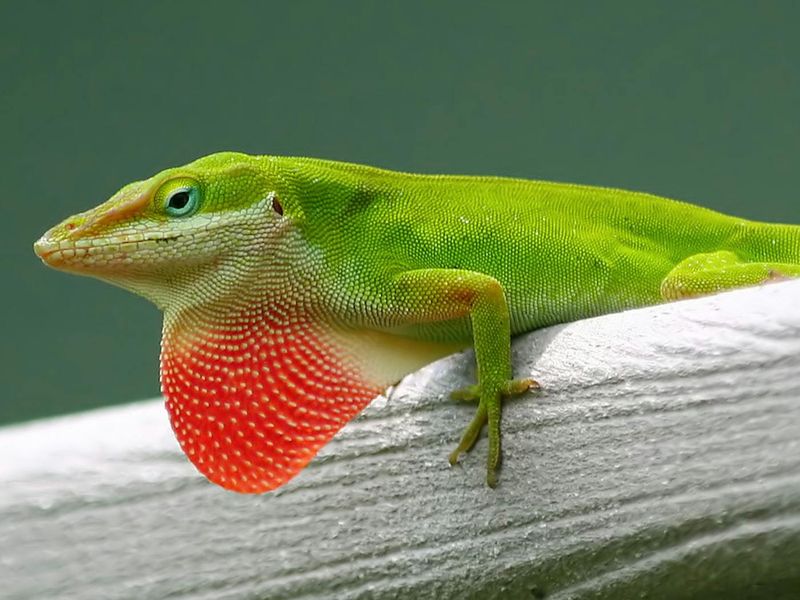
The Green Anole is a small, agile lizard native to North Carolina, known for its ability to change color from bright green to brown. With its elongated body and long tail, it is a master of camouflage.
Anoles are insectivorous, helping control pest populations in gardens and forests. Males are known for their display behavior, extending a pink dewlap to attract mates or assert territory.
Green anoles are a delightful presence in North Carolina’s gardens, representing the vibrant reptilian life of the region.
Brown Pelican
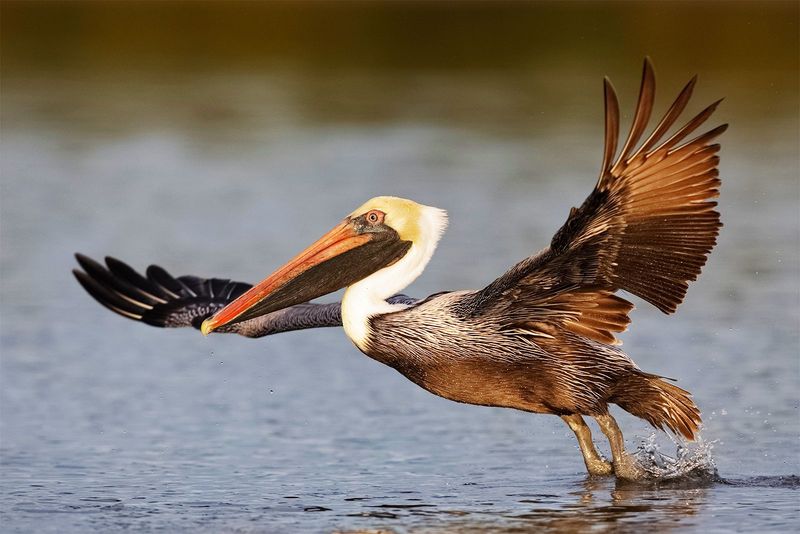
The Brown Pelican is a captivating seabird found along North Carolina’s coastlines. Known for its large wingspan and distinctive bill, it is a skilled diver, plunging into the ocean to catch fish.
Pelicans are social birds, often seen in flocks gliding above the waves. They contribute to marine ecosystems by controlling fish populations.
The recovery of the Brown Pelican from near-extinction is a success story of conservation efforts. Their graceful presence is a highlight of North Carolina’s coastal wildlife.

